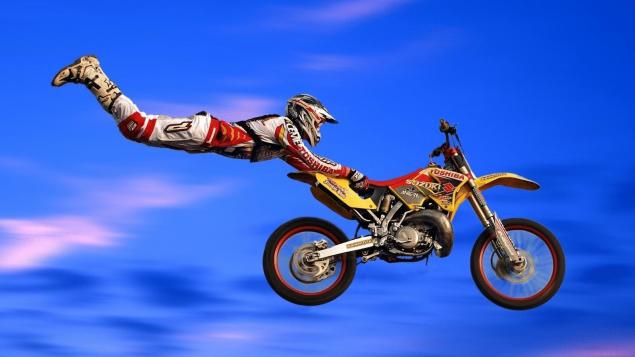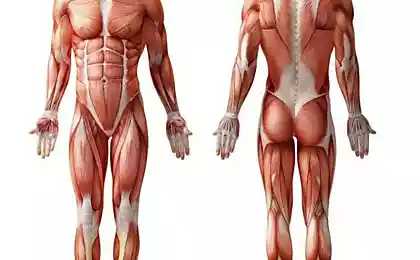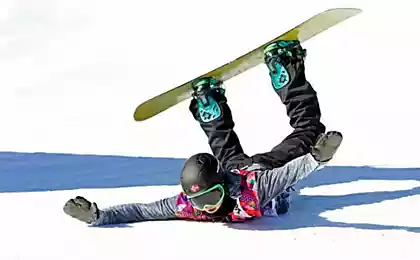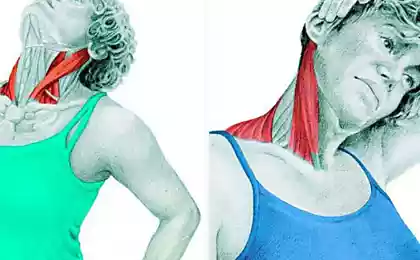517
The risk of serious injury of head and neck associated with extreme sports
A new study presented March 14 at the Annual Meeting of the American Academy of orthopaedic surgeons 2014 (AAOS) showed that for the thrill when doing extreme sports have to pay a high risk of severe injury of the head and neck.
Extreme sports is gaining in popularity: skateboarding has jumped to 49 percent (14 million members in the United States), and snowboarding attracts 7.2 million fans, an increase of 51 percent since 1999.
In the first of its kind study, researchers analyzed data from the National Electronic System for Monitoring Injuries (NESCT) (National Electronic Injury Surveillance System (NEISS) for the years 2001-2011 in seven extreme sports presented in the winter and summer extreme games: surfing, mountain Biking, motocross, skateboarding, snowboarding, and skiing. Information from the database NACKT gathered individually for each sport and type of injury head and neck: breaks, bruises/scrapes, fractures, sprains (neck) and cerebral concussion. The risks of concussion, fracture of the cervical spine and skull fracture were calculated in accordance with the shares of the participants of extreme sports taken from the report participants of outdoor Games in 2013.
Of the 4 million injuries recorded in the extreme sports, 11.3 percent have injuries to the head and neck. Of all injuries of the head and neck attributable to class extreme sports, 83 percent were head injuries and 17 percent neck injuries. The data included all ages, however, teenagers and young adults are most susceptible to injuries when doing extreme sports. Other findings:

Surveys provide "an opportunity for sports medicine and orthopaedic surgeons to advocate for safer equipment, improved local health care and further study of injuries when doing extreme sports," said Dr. Sabetan.
The Academy recommends the use of helmet for Cycling, skateboarding, skiing, snowboarding and other extreme physical activity.
Source: sportmedicine.ru
Extreme sports is gaining in popularity: skateboarding has jumped to 49 percent (14 million members in the United States), and snowboarding attracts 7.2 million fans, an increase of 51 percent since 1999.
In the first of its kind study, researchers analyzed data from the National Electronic System for Monitoring Injuries (NESCT) (National Electronic Injury Surveillance System (NEISS) for the years 2001-2011 in seven extreme sports presented in the winter and summer extreme games: surfing, mountain Biking, motocross, skateboarding, snowboarding, and skiing. Information from the database NACKT gathered individually for each sport and type of injury head and neck: breaks, bruises/scrapes, fractures, sprains (neck) and cerebral concussion. The risks of concussion, fracture of the cervical spine and skull fracture were calculated in accordance with the shares of the participants of extreme sports taken from the report participants of outdoor Games in 2013.
Of the 4 million injuries recorded in the extreme sports, 11.3 percent have injuries to the head and neck. Of all injuries of the head and neck attributable to class extreme sports, 83 percent were head injuries and 17 percent neck injuries. The data included all ages, however, teenagers and young adults are most susceptible to injuries when doing extreme sports. Other findings:
- Four sports with the highest injury of the head and neck: skateboarding (129600), snowboarding (97527), and skiing (83313).
- Concussion was the most common head injury among all participants of extreme sports. The risk of concussion was greatest for skateboarding and snowboarding.
- Skateboarders, as it turned out, have the biggest risk of getting a fractured skull.
- Surfers have the greatest risk of fracture of the cervical spine, it is 36 times higher than that of skateboarders.
- The number of cases of injury of the head and neck when engaging in extreme sports increased from 34065 in 2000 to 40042 in 2010, although the trend was not logical from year to year.

Surveys provide "an opportunity for sports medicine and orthopaedic surgeons to advocate for safer equipment, improved local health care and further study of injuries when doing extreme sports," said Dr. Sabetan.
The Academy recommends the use of helmet for Cycling, skateboarding, skiing, snowboarding and other extreme physical activity.
Source: sportmedicine.ru
"Green" recycling in San Francisco
Incredible multicolored lakes of the Kelimutu volcano in Indonesia























